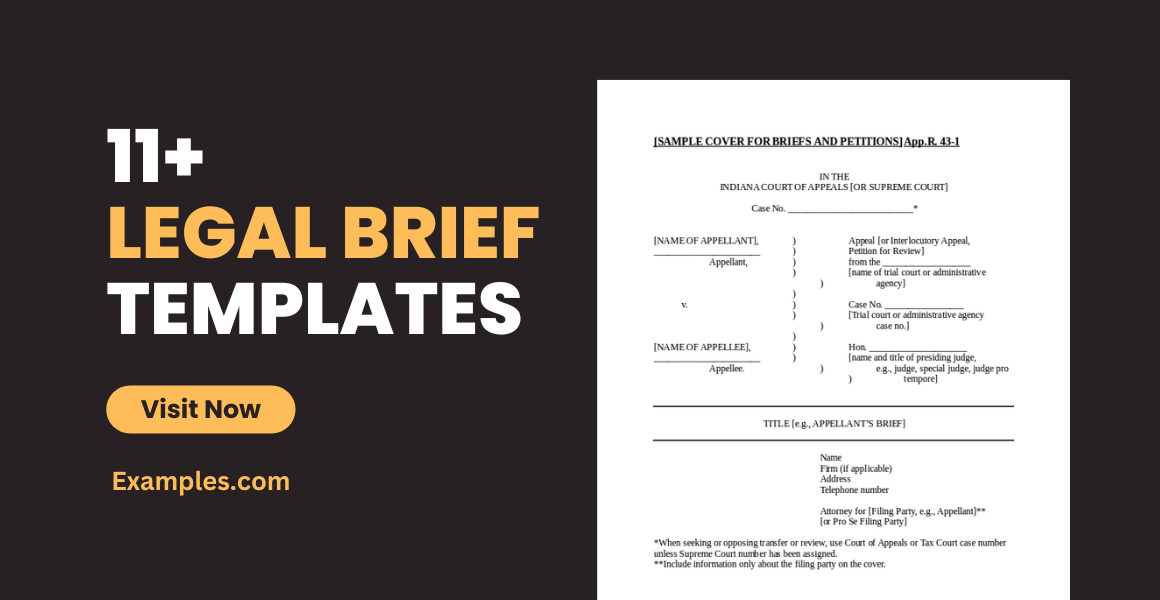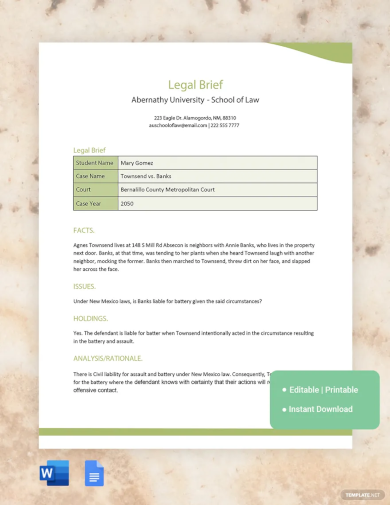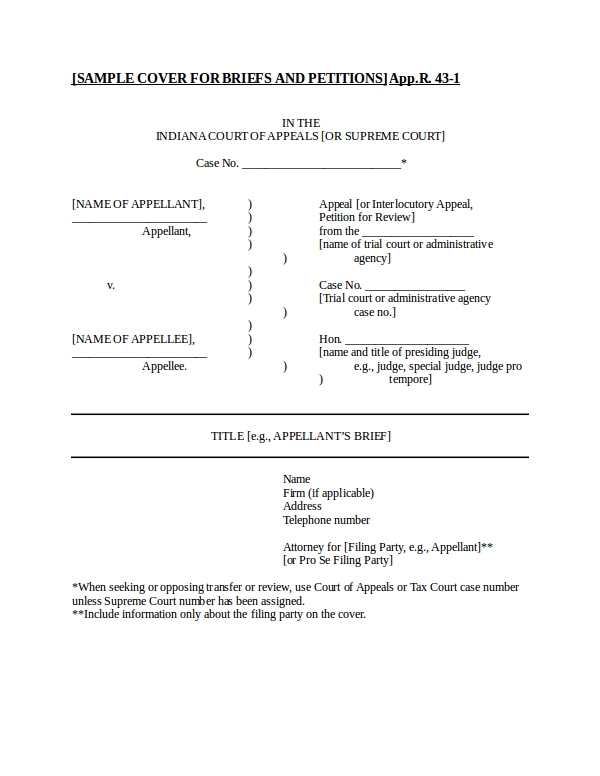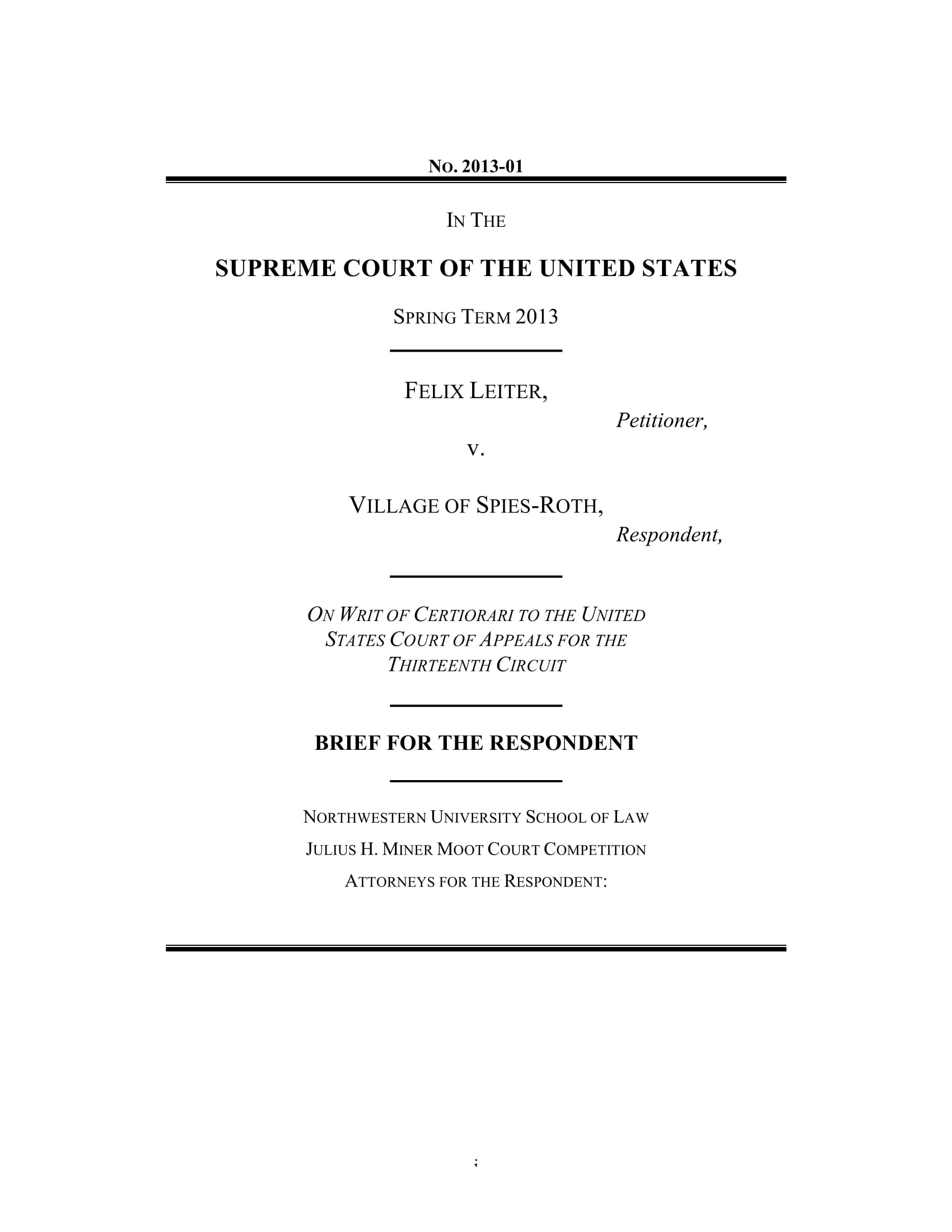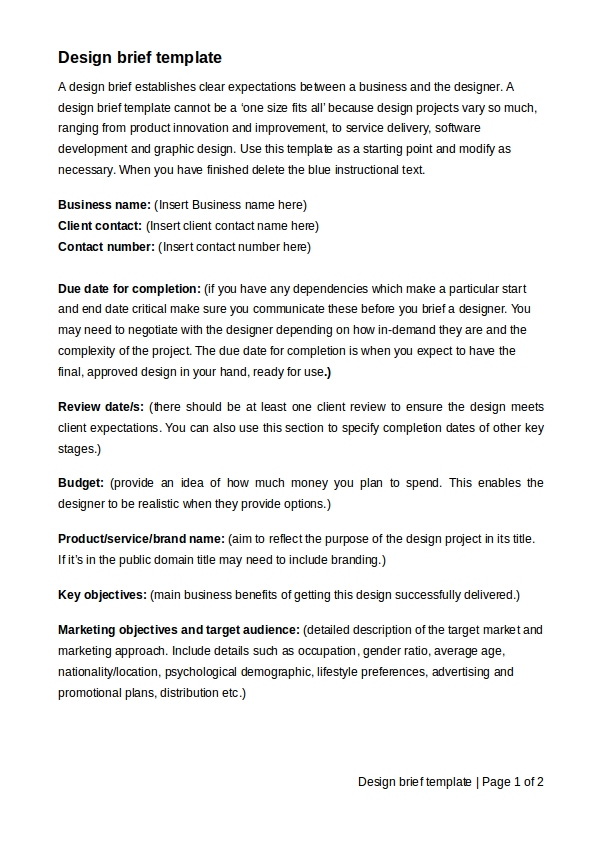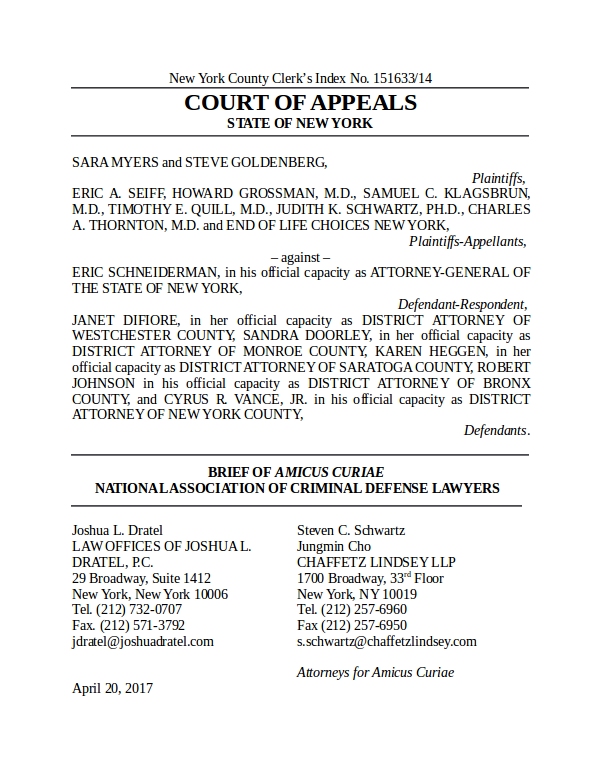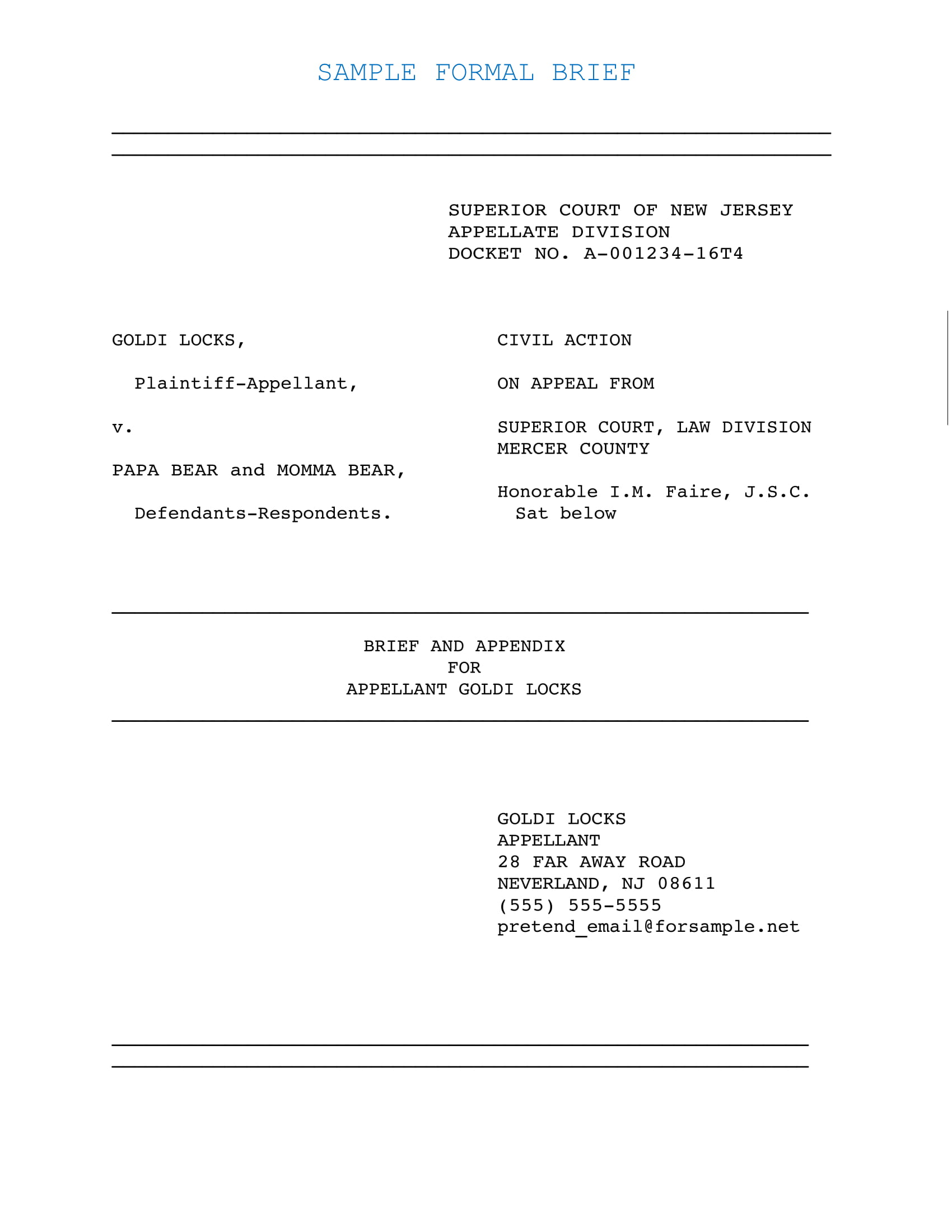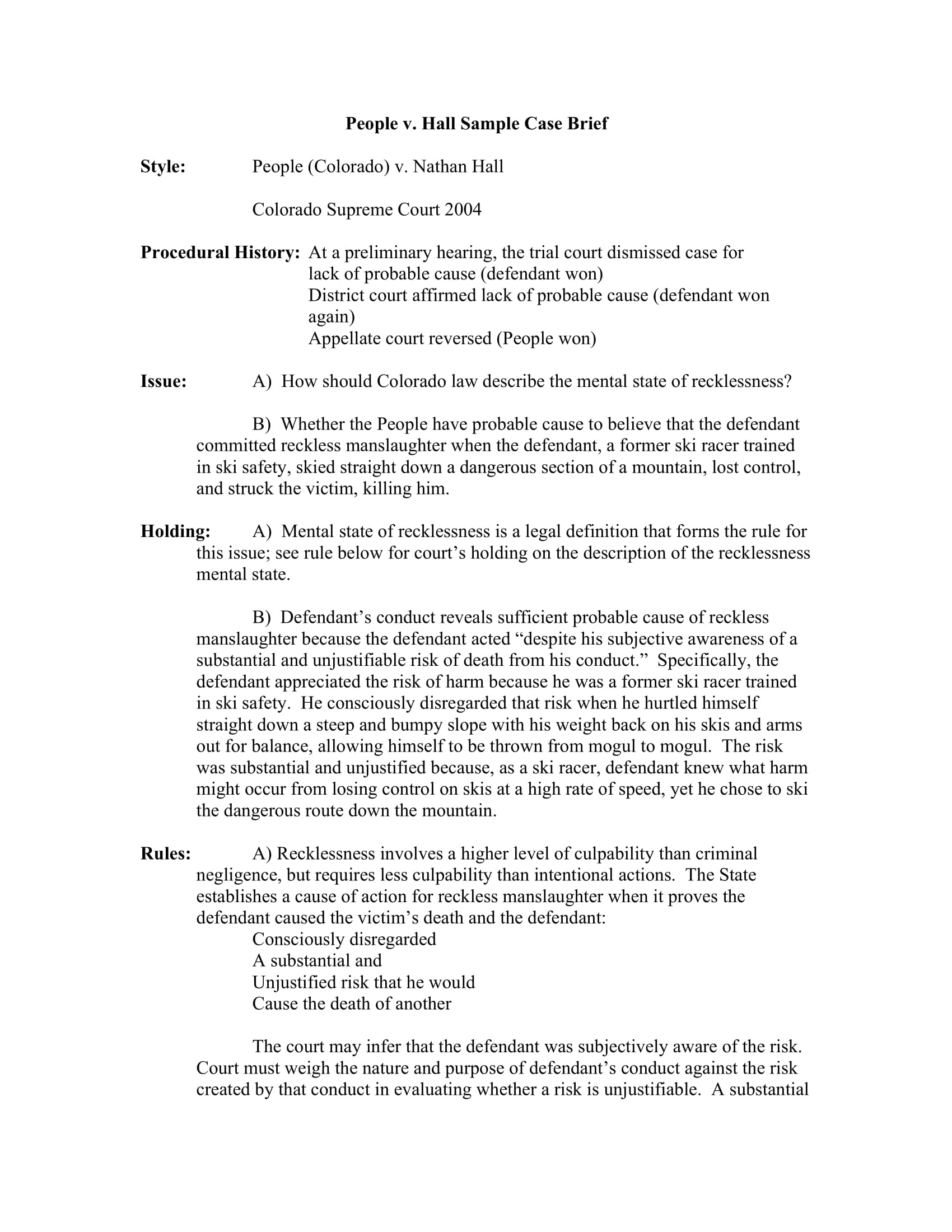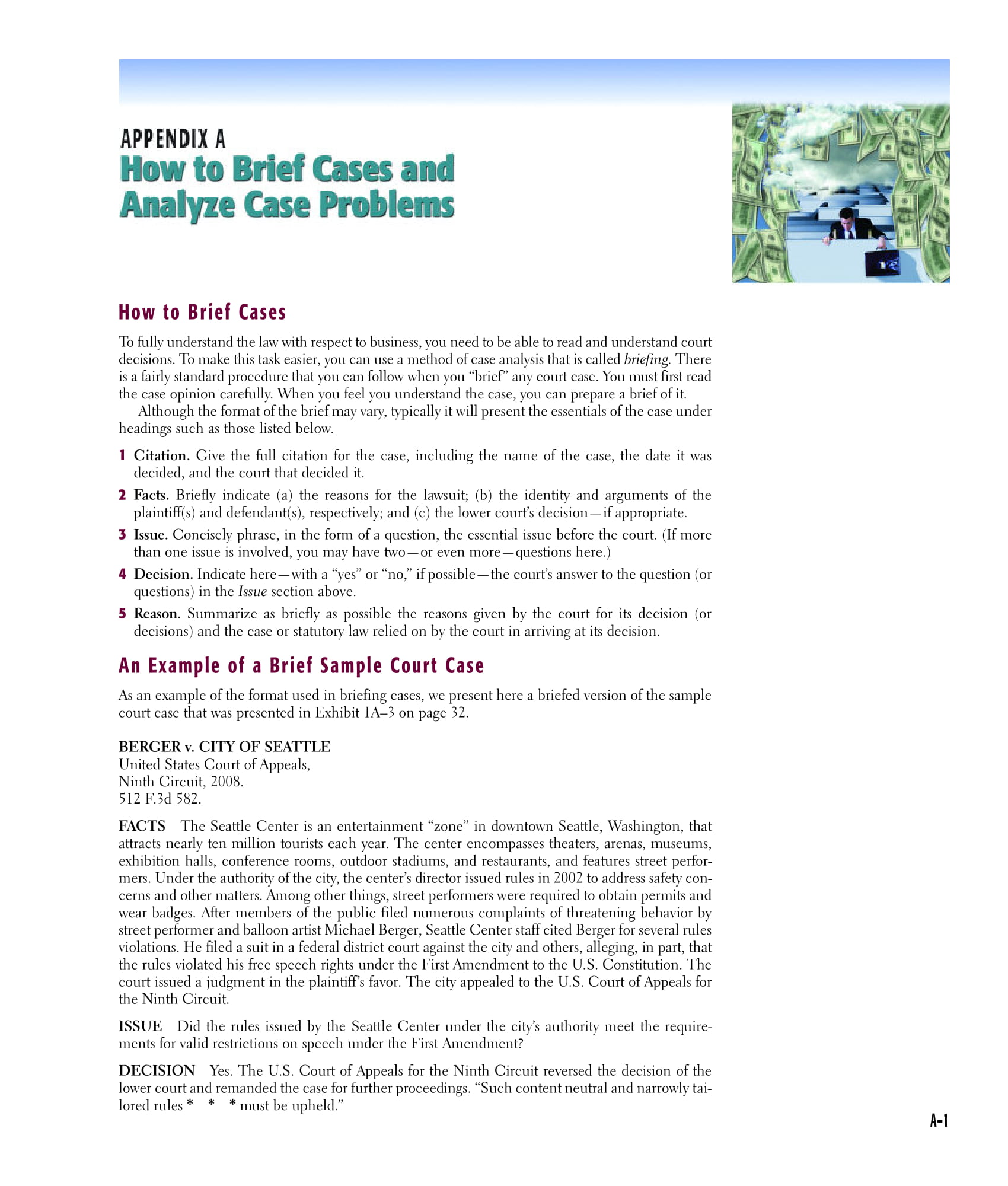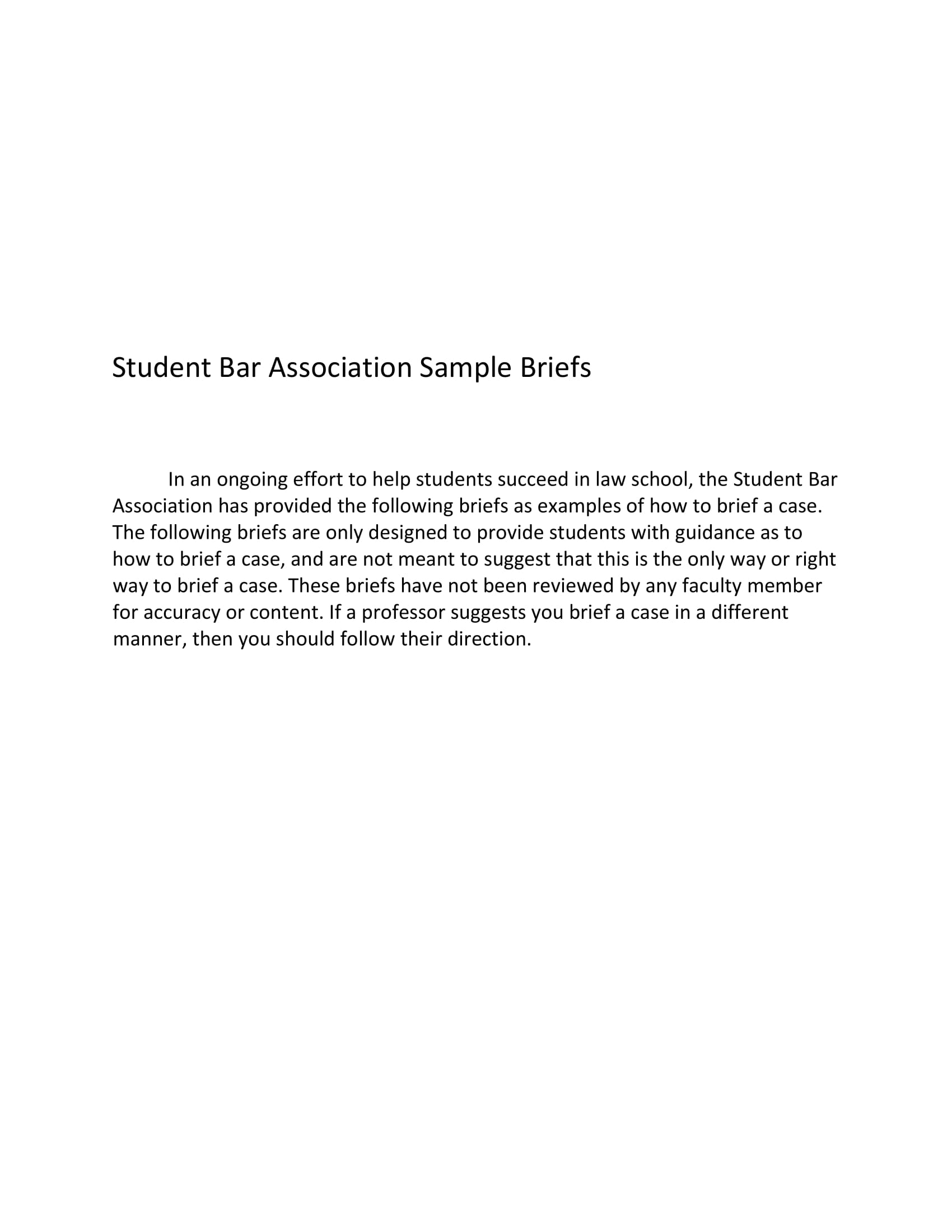11+ Legal Brief Examples to Download
To some, the phrase Legal Brief can be terrifying. They keep it only to legal matters, and that it should be something to be discussed only by lawyers. But what exactly is a legal brief? What is legal? What is brief? And while there may be thousands of templates on the Internet that can be used for writing legal briefs, oftentimes, the result can be devastating. Not only because it was written by a non-lawyer, but because of the writer’s lack of grasp on the case, as well as, the lack of methodologies in writing a brief.
Legal Brief Template
Legal Case Brief Outline Template
So what is a Legal Brief?
Let us start with the word brief. The word brief has its Latin origin, “brevis,” meaning, short. And legal, from the word “lex,” or what we understood now as law. Simply state, a legal brief is a document that is written to defend one side of the argument, that one client or party should prevail over the other for some legal reasons. In a proceeding or a case, this is what happens in a pre-trial motion.
Generally, a legal brief has this pattern or format:
Title Page
This includes the title of the case file presented, the name of the court, the side on which the appellate represents, the all the individuals involved in the case.
Table of Contents
Here is the body of the argument presented by the appellate. It is not uncommon in legal documents to see sections divided into smaller sections, such that a definition may be presented as follows, for example:
- Lorem ipsum dolor sit amet, consectetur adipiscing elit, sed do eiusmod tempor incididunt ut labore et dolore magna aliqua.
- 1. Lorem ipsum dolor sit amet, consectetur adipiscing elit, sed do eiusmod tempor incididunt ut labore et dolore magna aliqua.
- 2. Lorem ipsum dolor sit amet, consectetur adipiscing elit, sed do eiusmod tempor incididunt ut labore et dolore magna aliqua. Et cetera.
Table of Authorities
In non-legal terms, this can act as a bibliography. This is where the available sources, materials are listed to support the arguments of the appellate.
Summary or the Body
However good one is at writing a legal brief, nothing can defeat at someone who is well prepared. So how does one prepare a legal brief?
Preparing a Legal Brief
1. Understanding the Case
- After meeting with the clients, the best thing one can do is read through the notes, the case files. It is in this little details that one can completely grasp what the case is all about, and how to handle it.
- By understanding, it means, understand the case as well as the people involved in it.
2. History
- If you want to best over your opposing party, go back to the previous cases, read through different files.
3. List
- From here, you make a list of the important matters. You should be able to cite support on these arguments.
4. Research
- From the list, how are you going to handle each? Your best bet is to research.
Now that you have studied your case, your next concern is how to write your legal brief. Like writing a thesis, a legal brief requires coherence, consistency in your argumentation. Anything you present should always have a source, otherwise, you would not be able to persuade anyone inside the court. So, this is it – writing the legal brief.
Before laying all the cards on the table, one should also look whether to write trial brief or appellate brief. A trial brief is something written in support for the court’s motion; the other one, the appellate brief, to support a case so as to overturn the court’s decision. But without going to much nuances of the two, either briefs require well-written presentation. In this presentation, we limit our scope to legal brief in general.
Format. Every court varies from one to the other in its format. Always refer to the manual. This includes the format in page indent, heading, the font size and style. The other thing that can be missed out or neglected is the citation. When not observed, it may affect the level of your persuasion.
Title Page. You have read this before. A Title Page identifies the case, and mentions the person filing the brief. The title of the case is where one shows who is arguing whom.
Table of Contents. Here, we see all the headings. This is where one sees the preview of the brief. It is sometime abbreviated as TOC. This page usually appears before the page of the actual presentation, the body.
Table of Authorities. Here is a list of cases. The list contains numbers or pages in which the cases appear in other pages. Usueally arranged in alphabetical order.
So basically, those are the elements one should look into when writing a legal brief. There are many templates found on the net. But there are rules in every court. And it should factor your decision on how you present your case.
The keyword is organize. If you can’t organize your presentation, you can’t expect the court to be persuaded by you. Part of organization is, coherence. If you say this and that on the second page, you should maintain the said reasoning in the last page of your brief. Imagine, you are showing a map to the judge. That map gives you the direction you want your audience, the judge be led to.
Arrangement of arguments. There can be as many arguments in a single brief. But what do you want to prioritize. Of course, it is the one that really supports what is in the title page. The weaker arguments are there to support the strongest one. That way, it is easier for the judge to be persuaded by your presentation. If the case is clear in your head, the bigger the chance it will also be clearer to them. In music, it is called, motif. You have plenty of notes in a composition. But one motif, one theme always stands out. It is the one that remains in the head of the listener. It is the argument that they will hold on to.
It would help if you avoid long or dense thoughts or sentences in your summary or body of the brief. The shorter, the better. Although, that is just some sort of style in writing. But you would not want the reader to get drowned just because your sentences, paragraphs look too boring and taxing. Right? The headings, which is a one liner sentence is all there is they want to read. It is bold, and has a strong message. They do not need plenty of explanation, not that they do not need any. But they are there already.
Any legal brief is about format, and less of a style. So resist a bit of your creativity, and let the straighter you control the flow in writing the legal brief.
And just like any other non-creative writing, a legal brief will be more convincing if it is more objective. Avoid using the pronoun I. It is not about you as the writer, but about the case. Step away a little from the scene, and let other characters play out the role. Your role is to move ideas, persuade people without showing yourself in the scene.
Always use citations. If you fail to support what you write, the legal brief will be as good as nothing. And so, your legal brief might as well be reduced to a series of opinions rather than facts. And that is not a good thing. Citations can help your thoughts hold coherently because you have always a reference to hold on to. There is always something to go back to when something gets swayed and messy.
Lastly, for a legal brief to be persuasive, the writer should at least be convinced of what he or she is presenting. It is good to use citations, and some other sources. But without a heart, it will make the brief less convincing. Use your heart not too much that it becomes too personal and subjective, just enough so as to make it more humanly. For what is a legal brief if it does not serve the purpose of man, of humanity.
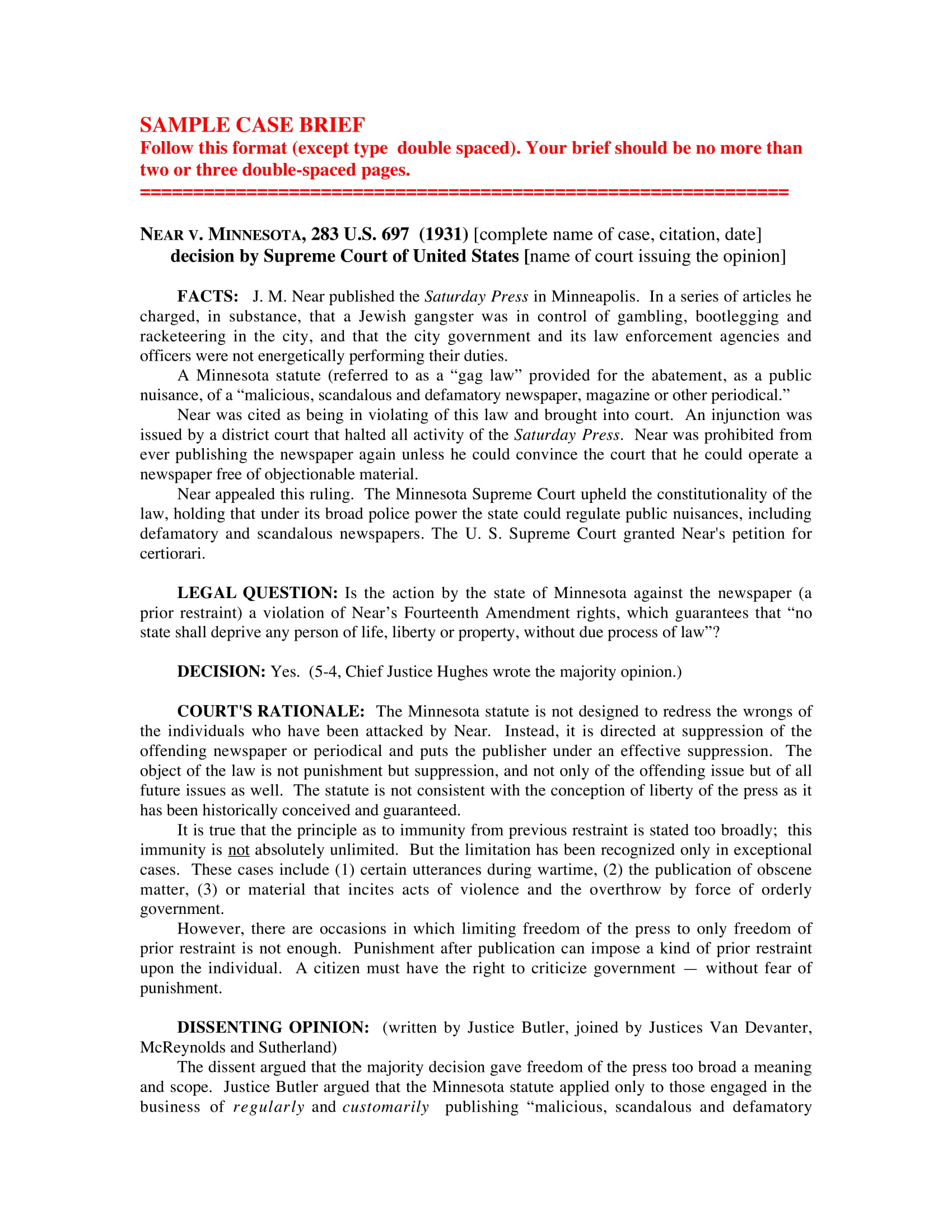
So that is how you make legal brief template. Always make sure that your words are honest down to the smallest details. There is some legality involved. People can be at risk. And the words you used, you put into the paper, can be used against you. In other words, be subjective. Try not to be too opinionated.


